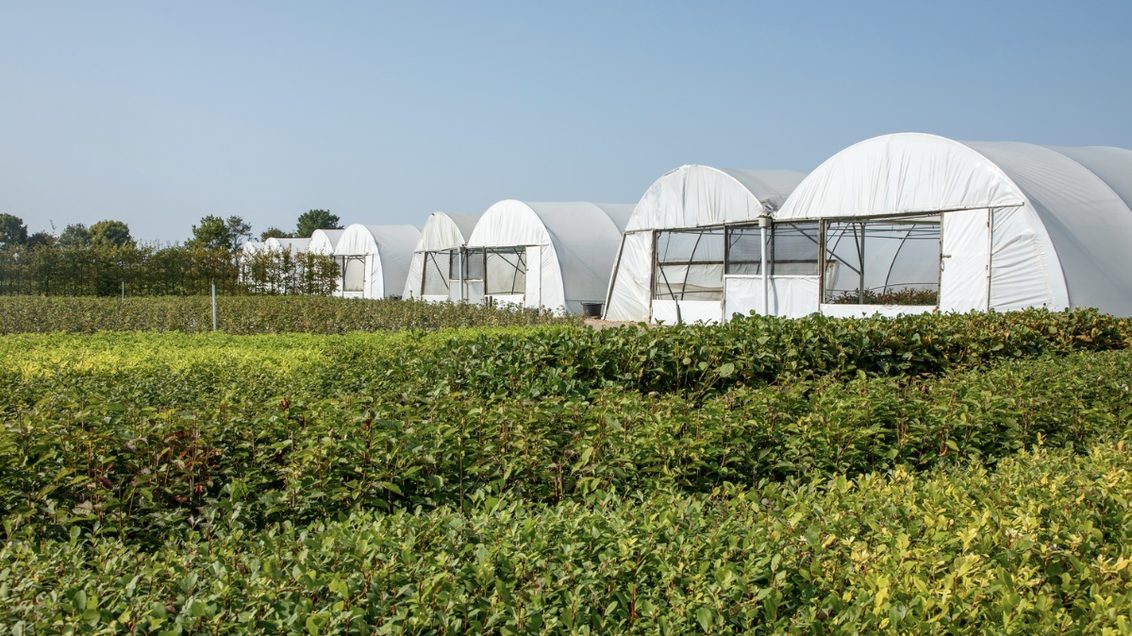Nozzles: the basics
What are the key aspects of nozzle specification?
How do I choose the right nozzle for the crop?

At Syngenta we take great pride in the R&D that goes into developing some of the most effective active ingredients, delivered in some of the best plant protection product formulations available. It’s all designed to give the best possible levels of control.
But as one of my colleagues – Alan Cochran, an applications specialist at our Jealott’s Hill research station – reminded me recently, the chemistry can only give of its best when it has hit the target. That’s why Syngenta also runs an active programme of research into nozzle development. And although we design them with particular products or crops in mind, they’re often suited to many other applications.
Given the range of species on most ornamentals nurseries – that amazing diversity of shape, size and general ‘plant architecture’ is what we’re about, after all – I’m still a little surprised when I visit a grower and find they rely on just one type of nozzle. I could perhaps understand that if it was the same nozzle for every grower – but each grower seems to have a favourite and they rarely move away from that nozzle to do every job on every crop.
So in this short series of blogs I thought it would be useful to take a brief look at the range of nozzle types out there and the kinds of ornamental crop applications you might want to consider them for.

Any nozzle does three jobs: it increases the surface area of the liquid you’re applying; distributes it across an area; and creates an impact force of the droplets onto the surface being sprayed.
The liquid is delivered to the nozzle under pressure, which is what creates the energy that breaks the liquid into droplets and propels the droplets to their target. The higher the pressure, the greater the energy, hence the greater ‘atomisation’. That’s why, for any given nozzle, the higher the pressure, the finer the droplets.
Nozzles are designed to work at an optimum pressure, around 2 to 3 bar for most designs, at which they produce a specific spray pattern and range of droplet sizes.
Nozzle manufacturers will provide charts showing how droplet size changes with pressure for each nozzle, but compromising on pressure to manage droplet size is a poor substitute for selecting a nozzle of the appropriate size. Some of these are better than others – some will indicate optimum pressure ranges and some will not, some will indicate the droplet sizes that will be achieved at different pressures. Charts that are put together well are an excellent guide but those with no detail are not very helpful. Have a look at the one we produce for turfcare nozzles as an idea of what sort of information you should be looking for.
It’s also worth bearing in mind that changing pressure does little to vary the actual volume applied. You would have to quadruple pressure to double the output.
Droplet size is key to coverage but there’s a compromise to be made between coverage (where fine drops are the ideal) and penetration into the canopy (where heavier, faster droplets do best).
The last few years have seen nozzle manufacturers standardise nozzle colour coding to make it easier for users: The colour represents the flow rate (the amount of fluid delivered at a set pressure / the size of the orifice). The size of the droplet can then be altered by the amount of pressure delivered but at the same pressure a red 04 nozzle will deliver more fine droplets than a white 08 nozzle will. A small hole with low pressure will deliver less fine droplets than a large hole with very high pressure.
You can find details of the standard colour codes here.
The nozzle is the last point of contact before your chosen treatment hits its target so it makes sense that you have as much control over it as possible.
In the next two blogs we’ll look in more detail at the differences in nozzle design and the implications for crop protection in ornamentals.

